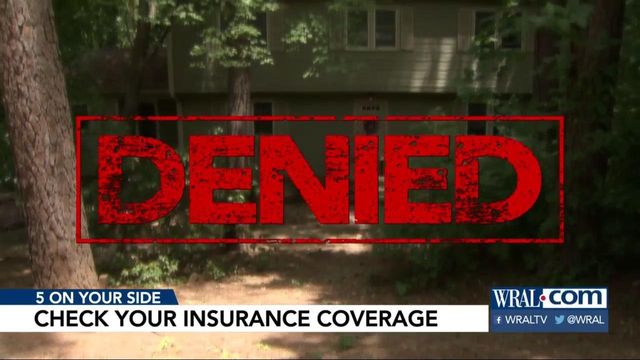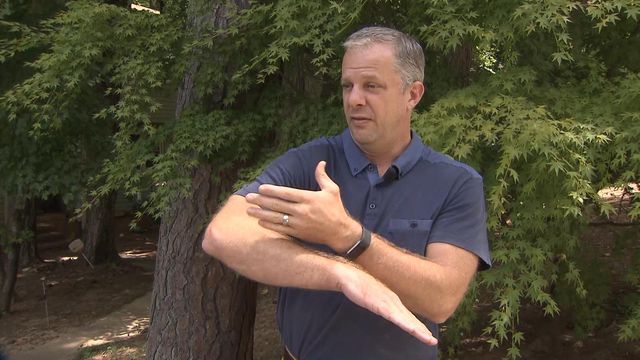Would your insurance cover it? 5 On Your Side says check your policy
You have insurance, but is it enough and what does it cover?
A Raleigh woman is sharing her nightmare after her policy barely touched the damage caused by a sewer line backup.
Laurie Snyder showed 5 On Your Side hundreds of pictures of the disaster when the city of Raleigh sewer line flooded her home.
The water came in through a toilet.
"It was everywhere," Snyder recalled.
It ruined flooring, a bathroom, the kitchen, even drywall that had to be removed. The sewer water also flooded and killed her HVAC unit.
Raleigh utility leaders blamed the back-up on a grease clog in the sewer main.
For that reason, the city said the damage to Snyder's home was not its fault and denied her claim for roughly $45,000 in damages.
"I thought, 'Oh my gosh, I don't know what I'm going to do,'" Snyder said.
Then another blow when she contacted her homeowner's insurance company.
"My insurance coverage was $5,000," she said. "It wasn't nearly a drop in the bucket to help me fix it."
Most standard homeowner's policies do not cover damage from sewer backups. That requires supplemental coverage, what's called a rider or endorsement. It's added insurance you can buy to cover specific issues. Flood insurance is an example more familiar to many of us. A rider for sewer backups can cost as little as $50 a year.
The heartbreaking irony for Snyder is that paying for extra coverage is one step, making sure it's enough is another. She had coverage but didn't realize it was minimal.
After all this, she wishes she'd known more about the issue and the insurance implications, especially considering her home is in a higher risk location. (Homes located downhill from a sewer backflow are at greater risk.)
Snyder wishes she'd paid for additional coverage.
"You don't think about it at the time," she said. "You're just seeing how much your insurance is going to cost. You say, 'Well, I can do without that, my insurance is going to be be less.' It would have been worth it to have more coverage."
The Civil Engineering Research Foundation says overflows are increasing at a rate of 3% a year. The increases aren't just because of grease. Non-flushable wipes are also a common clog problem. So are tree roots and aging sewer systems.
Outdoor sewer and water pipes are all the homeowner's responsibility, from the street water and sewer main to the home.
While Snyder's house is cleaned up, it's not put back together. She says she doesn't have the money to finish her kitchen or bathroom repairs or to install missing drywall or to get a new HVAC system.
She says living like that is terrible. Since the back-up last November, she's had no heat and no air conditioning.
Snyder started a GoFundMe to help with some of the repair costs.
Her critical message: check your insurance policy..
"Make sure coverage is adequate for what damages may occur," she warned. "Mine was not."












